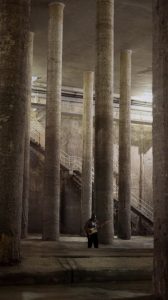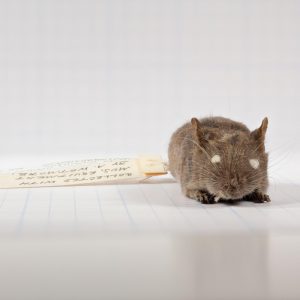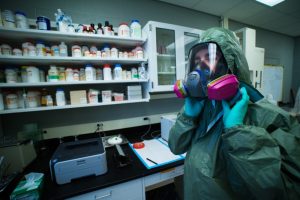Previously: The flying tree.
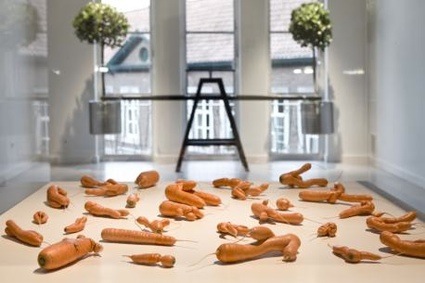 Photo by Kristof Vrancken/Z33
Photo by Kristof Vrancken/Z33
The exhibition Alter Nature: We Can, currently on view at Z33 in Hasselt, focuses on artists and designer’s visions on the ways humankind has displaced, manipulated or designed nature and how this affects and modifies our concept of ‘nature’. Some of the exhibited artworks embrace with enthusiasm this deracination and manipulation of what we call ‘nature’, others have a more critical take on it. Some rely on basic and quirky ploys, others call on the most scientifically advanced means.
Alter Nature extends beyond the Z33 walls with shows at CIAP and at the Fashion Museum. I wish i’d been informed about it, either in the gallery or on Z33’s website.
A striking and simple introduction to the exhibition could be Driessens & Verstappen‘s Morphotheque. The dozens of artificial carrots of the most unusual shape are based on natural carrots that were rejected in distribution centres for not presenting the ‘proper’ size and shape of a carrot. The works reminds us that it was only a year and a half ago that European Commission abolished its ridiculous ban on ‘imperfect’ fruit and vegetables.
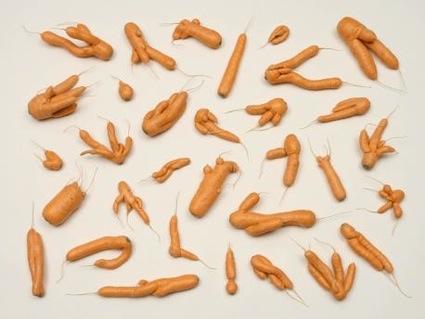 Driessens & Verstappen, Morphotheque, 1996, collection Anne Marie and Sören Mygind, Galerie für Landschaftskunst, Hamburg, Germany
Driessens & Verstappen, Morphotheque, 1996, collection Anne Marie and Sören Mygind, Galerie für Landschaftskunst, Hamburg, Germany
Morphotheque also refers to the fact that the now almost ubiquitous orange colour of carrots was a political choice. The Netherlands made it particularly popular in the 17th century as an emblem of the House of Orange and the struggle for Dutch independence. White, yellow, red, and purple carrots have long existed but they are now raised primarily as novelty crops.
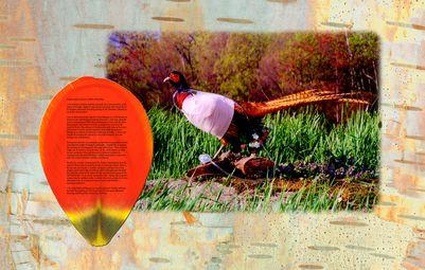 Adam Zaretsky, The Transgenic Orange Pheasant project, 2008. Courtesy: Adam Zaretsky
Adam Zaretsky, The Transgenic Orange Pheasant project, 2008. Courtesy: Adam Zaretsky
The House of Orange was also at the heart of the Transgenic Orange Pheasant project. Adam Zaretsky wrote to His Royal Highness Prince Willem-Alexander to propose him the creation of a “Royal Dutch Transgenic Breeding Facility” were orange pheasants would be bred and offered for the royal hunt. The exhibition features images of transgenic pheasants, an impressive genegun, the letter to Prince Willem-Alexander and two videos detailing the project. The manipulation of the colour of carrots doesn’t raise an eyebrow but the creation of a pheasant of the same hue triggers more doubts and questions: how far can one go in the creation of a ‘royal aesthetic’?
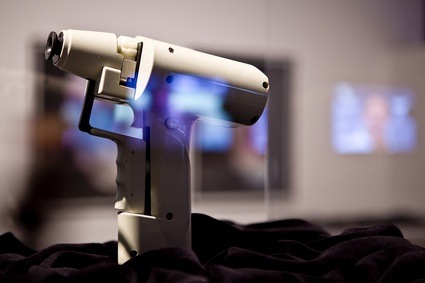 Adam Zaretsky, Transgenic Orange Pheasant, 2008. Photo: Kristof Vrancken / Z33
Adam Zaretsky, Transgenic Orange Pheasant, 2008. Photo: Kristof Vrancken / Z33
More about Adam’s work in Dangerous Liaisons and other stories of transgenic pheasant embryology.
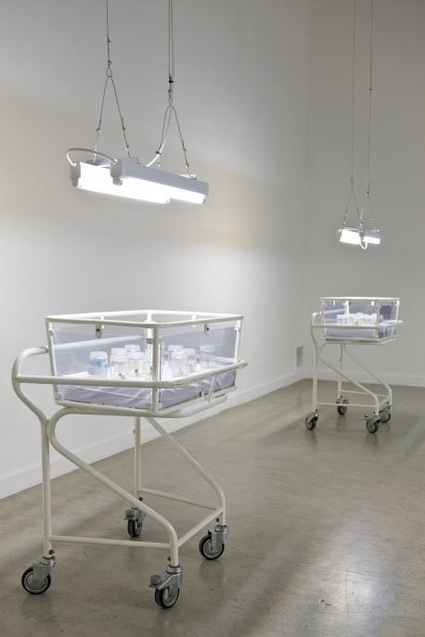 BCL (Georg Tremmel & Shiho Fukuhara), Common Flowers – Flower Commons, 2009. Photo by Kristof Vrancken/Z33
BCL (Georg Tremmel & Shiho Fukuhara), Common Flowers – Flower Commons, 2009. Photo by Kristof Vrancken/Z33
In Common Flowers, Georg Tremmel and Shiho Fukuhara have reverse engineered a type of carnation that was already the result of genetic manipulation. Suntory Flowers genetically manipulated an originally white carnation into blue and sold it under the name Moondust. It was the first commercially available genetically engineered consumer product that was intended purely for aesthetic consumption.
BCL bought the blue flower and using do-it-yourself biotech, cloned it in their kitchen. They later released their cloned flowers into nature along with an how-to-clone manual on their website in order to raise questions of intellectual property and copyright in the realm of nature.
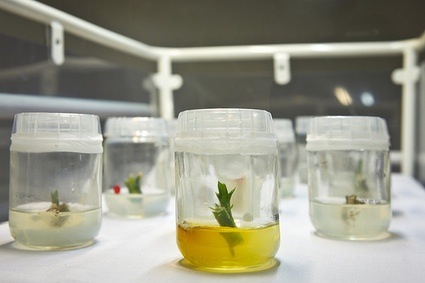 BCL (Georg Tremmel & Shiho Fukuhara), Common Flowers – Flower Commons, 2009. Photo by Kristof Vrancken/Z33
BCL (Georg Tremmel & Shiho Fukuhara), Common Flowers – Flower Commons, 2009. Photo by Kristof Vrancken/Z33
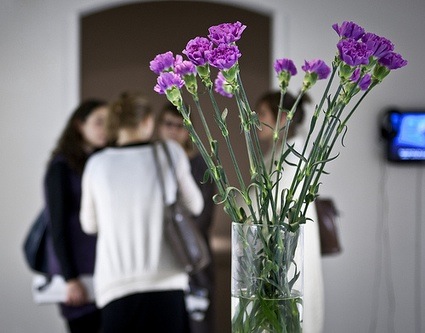 BCL (Georg Tremmel & Shiho Fukuhara), Common Flowers – Flower Commons, 2009. Photo by Kristof Vrancken/Z33
BCL (Georg Tremmel & Shiho Fukuhara), Common Flowers – Flower Commons, 2009. Photo by Kristof Vrancken/Z33
As i mentioned yesterday, the exhibition was rather cruel to trees.
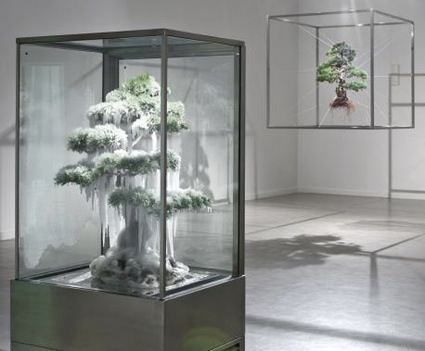 Makoto Azuma, Frozen Pine & Shik1 03, 2010. Photo by Kristof Vrancken/Z33
Makoto Azuma, Frozen Pine & Shik1 03, 2010. Photo by Kristof Vrancken/Z33
Makoto Azuma‘ s Shiki 1 features a bonsai tree suspended from a metal frame. The tree represents of course nature. It has been manipulated for aesthetic reasons. The steel frame adds a second layer of artificiality, it represents the legal framework within which nature is manipulated, or to which manipulations must comply.
In ‘Frozen Bonsai’, a new work commissioned for the exhibition, Makoto sprays a bonsai pine tree with instant freeze and presents this in a transparent fridge. As the ice slowly drains the colour from the bonsai tree, the tree dies – but its beauty is preserved in optimal conditions.
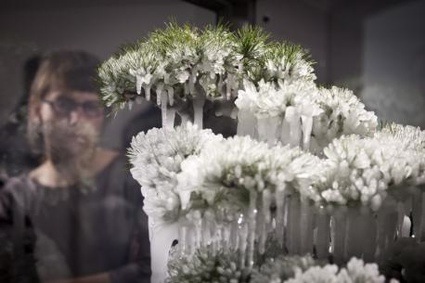 Makoto Azuma, Frozen Pine (detail), 2010. Photo by Kristof Vrancken/Z33
Makoto Azuma, Frozen Pine (detail), 2010. Photo by Kristof Vrancken/Z33
Have a look at this video interview with Makoto Azuma about ‘Shiki 1’ and ‘Frozen Bonsai’:
Le Paradoxe de Robinson is a palm tree installed on a trailer. Once you’re on the first floor of the exhibition space, you can see its branches swinging in the wind. A tropical tree lost in the Belgian grey Winter.
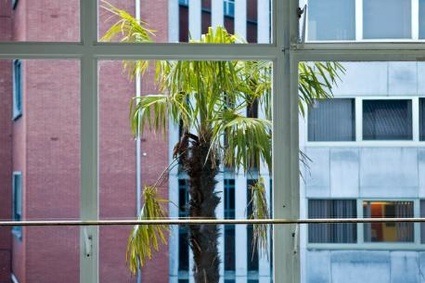 Julien Berthier, Le Paradoxe de Robinson. Photo by Kristof Vrancken/Z33
Julien Berthier, Le Paradoxe de Robinson. Photo by Kristof Vrancken/Z33
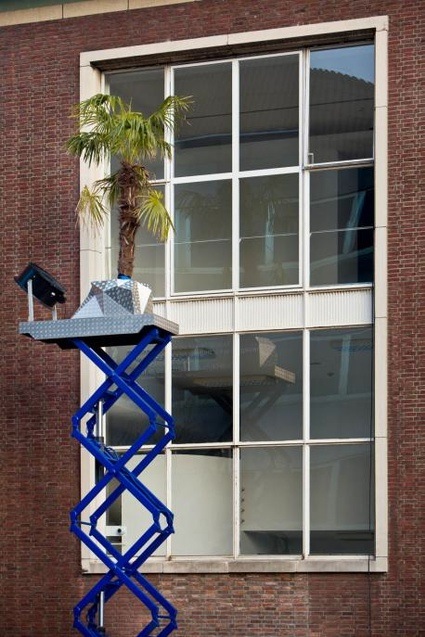 Julien Berthier, Le Paradoxe de Robinson. Photo by Kristof Vrancken/Z33
Julien Berthier, Le Paradoxe de Robinson. Photo by Kristof Vrancken/Z33
Tue Greenfort ‘s big “Wardian Case” protects 50 orchids. Wardian Cases were small greenhouses developed in the 19th century by Dr. Nathaniel Bagshaw Ward to protect his plants from London air which consisted heavily of coal smoke and sulphuric acid. Wardian Cases not only made it possible for city dwellers of the time to keep expensive orchids and ferns in their home, they also prompted the commercialization of exotic plants: vulnerable plants could now survive the boat journey because they were protected by Wardian Cases. The invention has even been credited for helping break geographic monopolies in the production of agricultural goods, they allowed tea plants to be smuggled out of Shanghai and seedlings of the rubber tree to be shipped from Brazil to new British territories. Wardian Case were a means to – literally – displace nature.
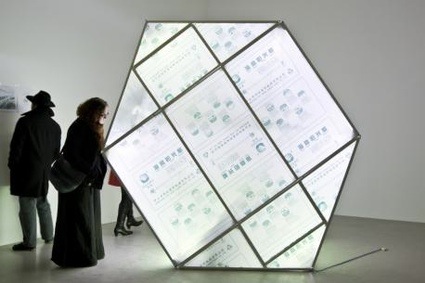 Tue Greenfort, WardianCase (Alustar-Sonatural), 2007-2011. Photo by Kristof Vrancken/Z33
Tue Greenfort, WardianCase (Alustar-Sonatural), 2007-2011. Photo by Kristof Vrancken/Z33
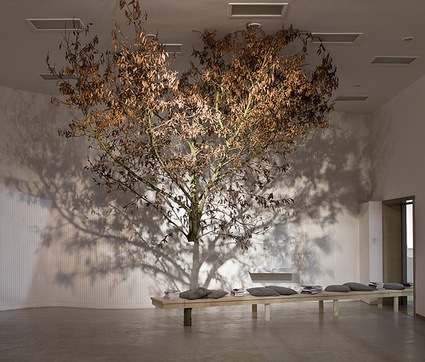 Lounge of Z33. Photo: Kristof Vrancken / Z33
Lounge of Z33. Photo: Kristof Vrancken / Z33
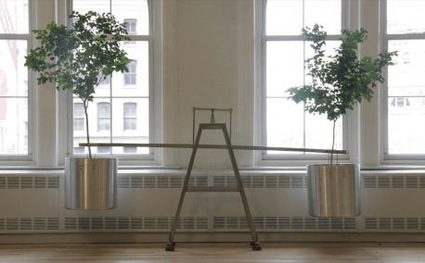 Natalie Jeremijenko, Tree Balance, 2005-2010. Courtesy: Natalie Jeremijenko
Natalie Jeremijenko, Tree Balance, 2005-2010. Courtesy: Natalie Jeremijenko
Also part of the exhibition: Acoustic Botany.
More images: on my flickr and on Z33’s: Alter Nature Opening and exhibition views.
Curated by Karen Verschooren, Alter Nature: We Can remains open until March 13 at Z33 in Hasselt, Belgium.


